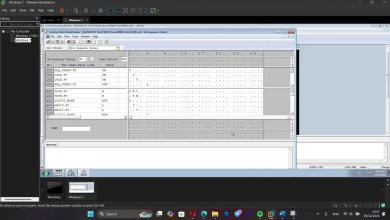How to Install Ubuntu on VMware Using an ISO File | Step-by-Step Guide | Linux Axle
Welcome to Linux Axle! 🚀 In this comprehensive guide, we’ll show you how to install Ubuntu on VMware using an ISO file. Whether you’re new to virtualization or looking to expand your skills, this step-by-step tutorial will walk you through the entire process, ensuring you can set up your Ubuntu virtual machine with ease. Let’s get started!
Prerequisites:
Before we begin, ensure you have the following:
VMware Workstation Player or VMware Workstation Pro: Download and install the version that suits your needs from the VMware website.
Ubuntu ISO File: Download the latest Ubuntu ISO file from the Ubuntu website.
A computer with sufficient resources: At least 4GB of RAM and enough disk space to accommodate the virtual machine.
Step-by-Step Guide:
Step 1: Download and Install VMware Workstation Player
Download VMware Workstation Player:
Visit the VMware Workstation Player download page and download the installer for your operating system (Windows or Linux).
Install VMware Workstation Player:
Run the installer and follow the on-screen instructions to complete the installation.
Step 2: Download the Ubuntu ISO File
Visit the Ubuntu Website:
Go to the Ubuntu download page.
Download the ISO:
Click on the “Download” button for the latest LTS (Long Term Support) version of Ubuntu.
Save the ISO file to a convenient location on your computer.
Step 3: Create a New Virtual Machine in VMware
Open VMware Workstation Player:
Launch VMware Workstation Player from your start menu or applications folder.
Create a New Virtual Machine:
Click on “Create a New Virtual Machine”.
Select the Installer Disc Image (ISO):
In the “New Virtual Machine Wizard”, select “Installer disc image file (iso)”.
Browse to the location where you saved the Ubuntu ISO file and select it. Click “Next”.
Select the Guest Operating System:
Choose “Linux” as the guest operating system.
For the version, select “Ubuntu 64-bit”. Click “Next”.
Name the Virtual Machine:
Enter a name for your virtual machine (e.g., “Ubuntu VM”).
Choose the location where you want to save the virtual machine files. Click “Next”.
Specify Disk Capacity:
Set the maximum disk size for the virtual machine (e.g., 20 GB).
Choose “Store virtual disk as a single file” for simplicity. Click “Next”.
Customize Hardware (Optional):
Click “Customize Hardware” to adjust settings such as memory (RAM), processors, and network adapter if needed.
Allocate at least 2 GB of RAM for better performance.
Click “Close” and then “Finish” to create the virtual machine.
Step 4: Start the Ubuntu Virtual Machine
Power on the Virtual Machine:
In VMware Workstation Player, select your newly created Ubuntu virtual machine and click “Play virtual machine”.
Boot from ISO:
The virtual machine will boot from the Ubuntu ISO file, displaying the Ubuntu installation menu.
Step 5: Install Ubuntu on the Virtual Machine
Ubuntu Welcome Screen:
You’ll see the Ubuntu welcome screen with options to “Try Ubuntu” or “Install Ubuntu”. Click on “Install Ubuntu”.
Select Language:
Choose your preferred language and click “Continue”.
Keyboard Layout:
Select your keyboard layout and click “Continue”.
Updates and Other Software:
Check the boxes for “Download updates while installing Ubuntu” and “Install third-party software for graphics and Wi-Fi hardware”. Click “Continue”.
Installation Type:
Choose “Erase disk and install Ubuntu”. Don’t worry, this will only affect the virtual disk created for the VM, not your host computer’s hard drive. Click “Install Now”.
Write Changes to Disk:
Confirm your choices by clicking “Continue”.
Select Your Time Zone:
Choose your time zone from the map and click “Continue”.
User Details:
Enter your name, computer name, username, and password. Click “Continue”.
Installation Process:
The installation will now begin. This may take some time, so sit back and relax.
Complete Installation:
Once the installation is complete, you’ll be prompted to restart the virtual machine. Click “Restart Now”.
Remove Installation Media:
When prompted, press Enter to remove the installation media (the ISO file) and continue the reboot.
Step 6: First Boot and Setup
Log In to Ubuntu:
After the virtual machine reboots, log in with the username and password you created during the installation process.
Explore Ubuntu:
Take a moment to explore the Ubuntu desktop environment. You can access applications, system settings, and more from the Activities overview.
Thank you for watching! If you enjoyed this video, don’t forget to like, subscribe, and hit the bell icon to stay updated with our latest tutorials. Check out our other videos to learn more about Linux distributions, tips, and tricks. Until next time, happy exploring with Linux Axle!
[ad_2]
source



